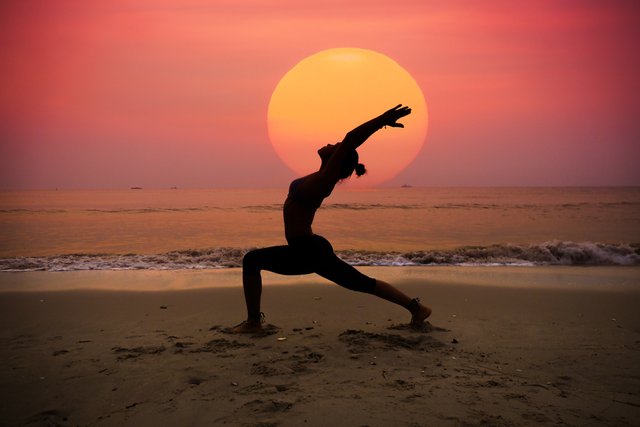Yoga needs no introduction. It is very popular and is performed all over the world. On the other hand, yoga can have different meanings for different people. Some people think of yoga as a form of exercise while others think of yoga as a practice of mental meditation. Yoga, on the other hand, is more than all of this. Yoga, in its most basic form, is about finding meaning in life through reflection. To some, this may seem harsh and insignificant, but in reality, practicing yoga can help you achieve great results as an ordinary person and overcome the difficulties of everyday life.
The Origins of Yoga
Yoga dates back over 5000 years to northern India. The word “yoga” first appeared in the ancient scriptures, the Rig Veda. Rishis (sages) improved and developed yoga by documenting their practices and views in the Upanishads, a vast work of more than 200 sutras.
Yoga comes in many forms and serves different people. To get the most out of all these yoga styles, you need to know what yoga style you are doing and always consider which one is best for your needs. Here is a list of the most common types of yoga you should be aware of.
Karma Yoga
Raja Yoga
Bhakti Yoga
Mantra Yoga
Jnana Yoga
Tantric Yoga
Hatha Yoga
Vinyasa
Kundalini
Ashtanga
Eyengar
Bikram
Karma Yoga
Karma Yoga is a form of yoga that focuses on doing good deeds. Giving one’s time, effort, and kindness to others without expecting anything in return or personal gain. This entails taking action without waiting for compensation, confirmation or approval. These can be small acts of compassion, such as picking up trash, repairing broken signs, or rescuing drowning bugs from puddles that run unnoticed. Karma yoga is the most humble form of yoga because it focuses on working for the greater good.
- Raja Yoga
Raja Yoga is a type of yoga that focuses on the mind. It focuses on the intellectual, emotional and intuitive aspects of personality. Its purpose is to help people reach their true potential through true understanding. This requires that we move from sensory experience to enlightenment and exalt the lower mind to the higher. It is said to awaken psychic powers and lead us to a state of self-awareness. It also includes reflection and meditation. It is best done with hatha yoga, which prepares the body for deep meditation. Raja Yoga is a great way to see things in perspective. - Bhakti Yoga
Bhakti Yoga is a form of yoga that focuses on devotion and love to the Supreme, God or Guru. It is determined by the development of a loving and lasting personal relationship with your loved one in whatever form you accept it. It is truly universal and surpasses all religions by the power of love! - Mantra Yoga
Mantra Yoga is a form of yoga based on the vibrations of the fundamental sounds of the universe. Mantras are spiritually charged Sanskrit words and phrases. Focus on reciting them and singing (called japa). Ultimately, this will lead to the dissolution of the outer world, which can lead to unity with the universe. - Jnana Yoga
The Yoga of Knowledge and Wisdom is known as Jnana Yoga. This is a yoga of self-discovery and questions like “Who am I?” To admit that we don’t know everything, without preconditions or assumptions, and to go inward into every decision. In Jnana Yoga, we pay attention to our higher selves and are intuitively guided by decisions that are understood, felt, and experienced as truth, rather than being “taught” academically. Ultimately, we identify and separate from the self, remaining the true self. - Tantric Yoga
Tantric Yoga is also known as Energy Yoga. The basic goal is to achieve complete union by bringing the duality of the feminine (Shakti) and male (Shiva) forces within ourselves into a state of nonduality. Tantra is frowned upon in some regions of the East and is not considered a form of yoga.
Tantra is a style of yoga that combines a variety of practices to study the inner universe through the human body, including mantra meditation, visualization, mudras, pranayama, and initiation. The cultivation and development of kundalini energy is the primary emphasis of these Tantric techniques and ceremonies. When the kundalini energy is activated, it is urged to flow up the nadis and chakras until it reaches the crown chakra, where it will “spill from the top” and cause Samadhi, or enlightenment. - Hatha Yoga
Finally, Hatha Yoga is yoga that balances the body and the subtle body. “Ha” means sun and “ta” means moon. It is a recently popular form of yoga in Western culture, defined as an asana (postures or poses). Hatha yoga also includes mudra (hand movements) and pranayama (breathing exercises) (breathing control). The goal is to balance the chakras and energy centers throughout our body.
. Hatha Yoga has various subcategories (those “subgenres” mentioned earlier). This is the most widely used style of hatha yoga today.
Vinyasa -Vinyasa yoga is a popular yoga style that combines pranayama with a continuous flow of asanas. As a process of life, each sequence is unique and constantly changing.
Kundalini -Kundalini Yoga awakens deactivated Kundalini energy at the base of the spine and flows upward through the chakras. It includes singing, vigorous dancing and vigorous breathing.
Ashtanga -Ashtanga Yoga is an energetic form of yoga that includes a variety of postures. To train and master the body, asanas are linked with breathing, turning them into advanced level asanas.
Eyengar — B.K.S. Iyengar has developed Iyengar yoga, which is a different style of hatha yoga. It is suitable for people of various body types and abilities by using props such as blocks, cushions, and straps.
Bikram — Bikram yoga, often known as “hot yoga”, is performed in an enclosed space heated to high temperatures and humidity. It is a new type of yoga that removes impurities from sweat.
To know more, visit, https://www.pranalink.com/blog/post/different-types-of-yoga/?utm_source=referrer&utm_medium=organic
